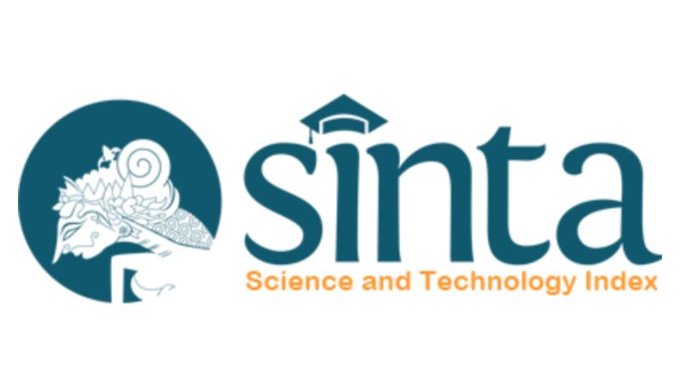Syphilis Elimination in Indonesia by 2030: Keeping in the Right Track
DOI:
https://doi.org/10.55175/cdk.v50i4.864Kata Kunci:
Elimination, sexually transmitted infection, syphilisAbstrak
Syphilis is still a global significant public health issue, including in Indonesia. World Health Organization estimated there were 7 million new syphilis infections in 2020 globally. Ministry of Health Republik Indonesia (RI) reported a total of 76,923 new cases in 2020. World Health Organization has set an ambitious target to reduce the incidence by 90% before 2030, in spite of slow global response. Syphilis elimination target in 2030 can be achieved through good cooperation between ministry of health and relevant institutions at central, provincial, and district/city levels; increasing and expanding public access to screening, diagnosis, and treatment; intensification sexually transmitted infection (STI) prevention such as health promotion, transmission prevention, surveillance, and case management; strengthening partnership and participation across sectors; increasing research and development regarding STI; and strengthening program management through monitoring, evaluation, and follow-up.
Sifilis masih menjadi masalah kesehatan publik dunia yang signifikan, termasuk di Indonesia. World Health Organization memperkirakan di dunia terdapat 7 juta kasus sifilis baru tahun 2020. Kementerian Kesehatan Republik Indonesia (Kemenkes RI) mencatat 76.923 kasus baru di tahun 2020. WHO telah menargetkan pengurangan insiden sebanyak 90% sebelum tahun 2030, meskipun respons global masih terbilang lambat. Target eliminasi sifilis tahun 2030 dapat dicapai melalui kerja sama yang baik antara Kemenkes RI dan institusi yang relevan di tingkat pusat, provinsi, dan kota/kabupaten; meningkatkan dan memperluas akses publik ke skrining, diagnosis, dan tata laksana; intensifikasi pencegahan IMS melalui promosi kesehatan, pencegahan transmisi, surveilans, dan manajemen kasus; memperkuat kerja sama dan partisipasi lintas sektoral; meningkatkan penelitian dan perkembangan terkait IMS; serta memperkuat manajemen program melalui monitoring, evaluasi, dan follow up.
Unduhan
Referensi
New study highlights unacceptably high global prevalence of syphilis among men who have sex with men [Internet]. 2021 [cited 2022 Dec 11]. Available from: https://www.who.int/news/item/09-07-2021-new-study-highlights-unacceptably-high-global-prevalence-of-syphilis-among-men-who-have-sex-with-men.
Ministry of Health Republik Indonesia. Estimasi IMS 2021. 2021.
Kang S. Fitzpatrick’s dermatology. 9th edition. McGraw Hill LLC; 2019.
STD Facts - Syphilis [Internet]. 2022 [cited 2022 Dec 9]. Available from: https://www.cdc.gov/std/syphilis/stdfact-syphilis.htm
Ministry of Health Republik Indonesia. Pedoman program pencegahan penularan HIV, sifilis dan hepatitis B dari ibu ke anak. 2019.
Ministry of Health Republik Indonesia. Peraturan Menteri Kesehatan no 23 tahun 2022. 2022.
Strengthened surveillance and prevention of mother-to-child transmission of HIV, syphilis and hepatitis B towards triple elimination by 2030 [Internet]. 2022 [cited 2022 Dec 12]. Available from: https://www.who.int/indonesia/news/detail/30-08-2022-strengthened-surveillance-and-prevention-of-mother-to-child-transmissionof-hiv--syphilis-and-hepatitis-b-towards-triple-elimination-by-2030
Ministry of Health. Peraturan Menteri Kesehatan no 52 tahun 2017. 2017.
The Syphilis Interventions towards Elimination (SITE) model projecting epidemic impact and cost of syphilis prevention and treatment interventions – technical methods report [Internet]. 2020 [cited 2022 Dec 12]. Available from: https://avenirhealth.org/Download/SITE/Syphilis%20SITE%20model_Technical%20Methods%20 report_24Aug2023.pdf
World Health Organization. Global sexually transmitted infections programme: strategic information [Internet]. 2023[cited 2023 Jan 13]. Available from: https://www.who. int/teams/global-hiv-hepatitis-and-stis-programmes/stis/strategic-information
World Health Organization. The WHO congenital syphilis estimation tool: structure and methods [Internet]. 2020 [cited 2023 Jan 13]. Available from: https://cdn.who. int/media/docs/default-source/hq-hiv-hepatitis-and-stis-library/stis/methods-for-congenital-syphilis-estimation-tool-1.pdf?sfvrsn=54266a06_3
Unduhan
Diterbitkan
Cara Mengutip
Terbitan
Bagian
Lisensi
Hak Cipta (c) 2023 Cermin Dunia Kedokteran

Artikel ini berlisensi Creative Commons Attribution-NonCommercial 4.0 International License.





















